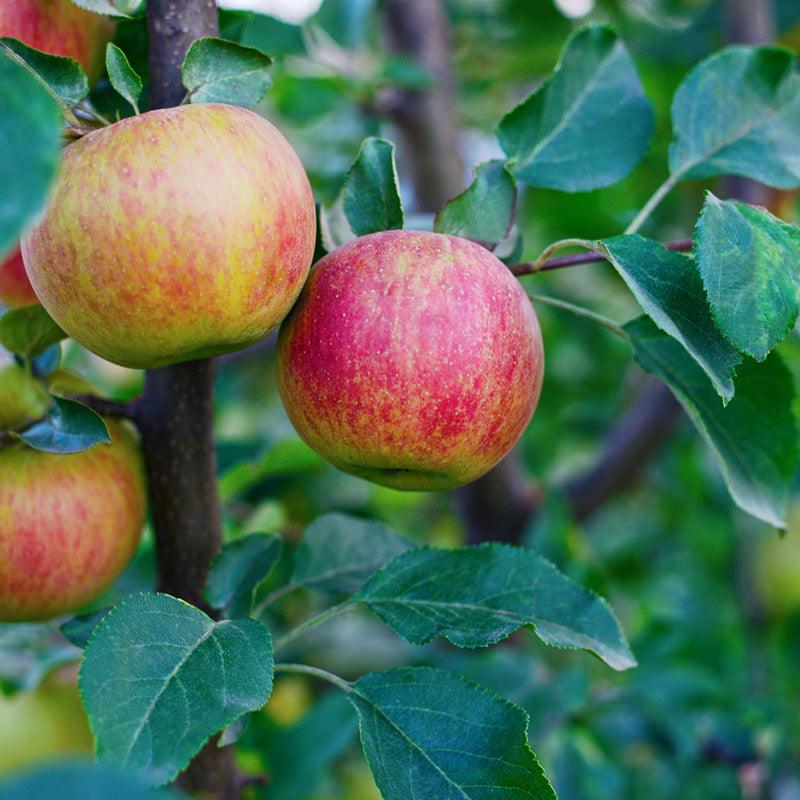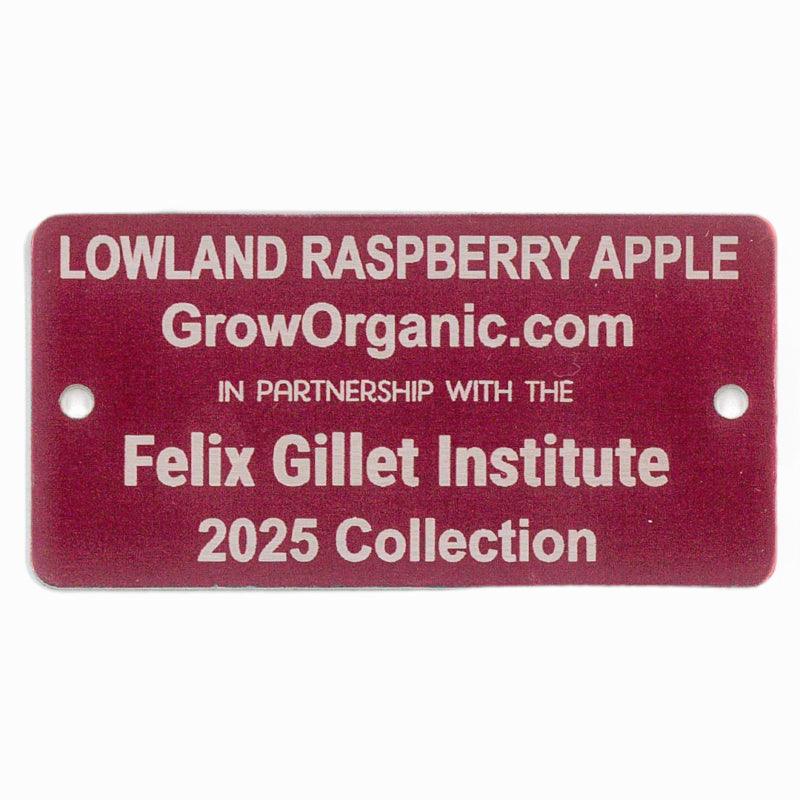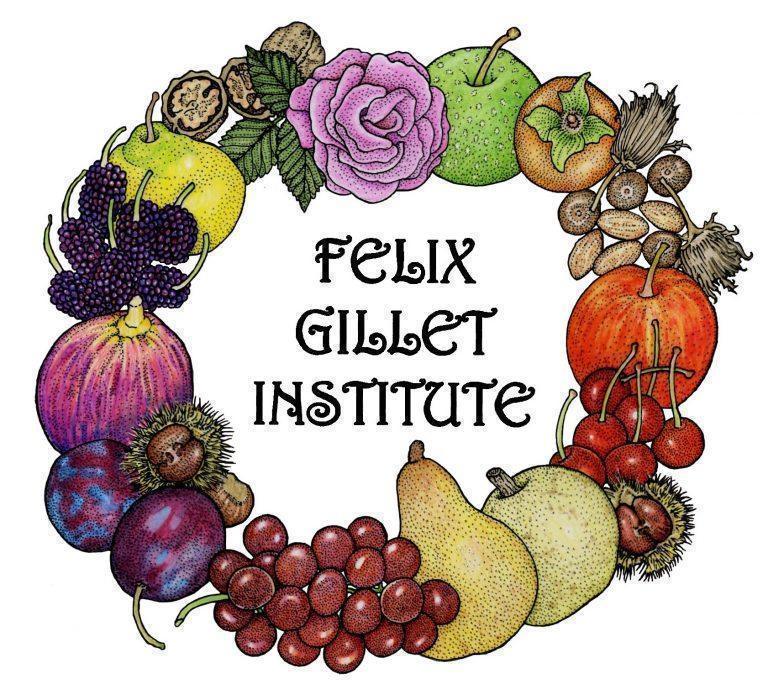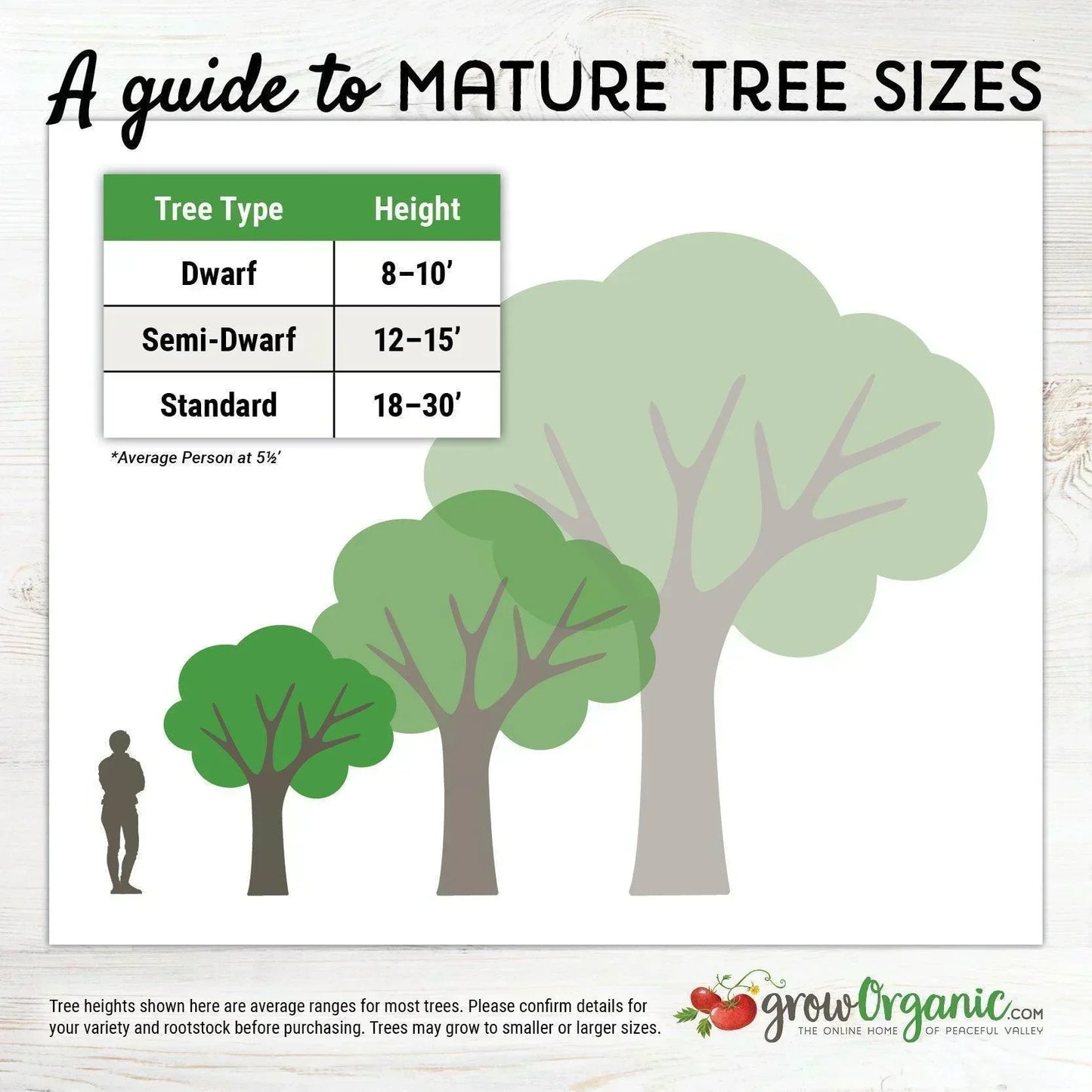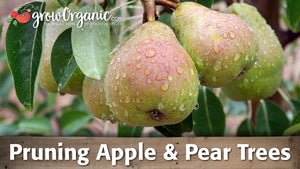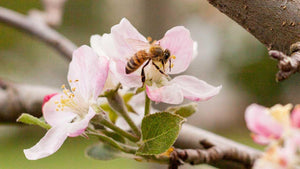Item Number: FT379
Lowland Raspberry Apple Tree
Textured Crispness with Smooth Vanilla Notes.
Every rare tree purchase supports historical orchard preservation
Limited availability—reserve up to 5 rare trees per order while supplies last
Each handpicked tree includes a durable etched metal display tag.
Standard on Domestic Apple Rootstock
The Lowland Raspberry Apple tree is a rare and exciting discovery, offering a delightful blend of crisp texture and a distinct sweet, creamy vanilla flavor. Found in Forest City, California, at an elevation of 4500 feet, this apple variety has quickly gained attention for its unique taste and historical significance. While still relatively unknown, the Lowland Raspberry Apple tree has become a topic of interest for gardeners, orchardists, and apple enthusiasts alike, especially given its connection to the rich apple-growing history of the Gold Rush era and its ties to the pioneering horticulturist Felix Gillet.
Historical Significance and Discovery
Forest City, California, was once a bustling mining town during the Gold Rush. Located in the Sierra Nevada, the area is known for its unique climate, which provides the perfect conditions for growing apples, particularly those requiring high chill-hours. It was in this setting that the Lowland Raspberry Apple tree was discovered, adding to the legacy of apple varieties that have thrived in the region since the 19th century.
The discovery of the Lowland Raspberry Apple tree adds a new chapter to the story of apple cultivation in Forest City. This small town has a rich history of apple growing, with many varieties dating back to the days of the Gold Rush. One notable figure associated with this history is Felix Gillet, a French-born horticulturist who arrived in California during the 1850s. Gillet was instrumental in introducing and cultivating a wide range of fruit and nut trees in the region, many of which continue to thrive today. His work laid the foundation for the diverse and resilient orchards found in the Sierra Nevada, and the discovery of the Lowland Raspberry Apple tree is a testament to the lasting impact of his efforts.
Each year, Forest City celebrates its apple-growing heritage with a small Apple Festival in October. This event not only showcases the town's unique apple varieties but also brings the community together to appreciate the historical significance of the region's apple trees. During the festival, the town’s giant old steam-powered stamp mill is fired up, offering a glimpse into the past when such machinery was used to crush rocks in the search for gold. The festival highlights the importance of apples in the local culture and the region's agricultural history.
How to Grow a Lowland Raspberry Apple Tree
Growing a Lowland Raspberry Apple tree involves understanding its specific needs, particularly those related to its high-altitude origin. However, with the right care and conditions, this tree can thrive in a variety of climates, offering gardeners a chance to enjoy its unique fruit.
Start by selecting a site that provides full sun and well-drained soil. The Lowland Raspberry Apple tree, like many apple varieties, thrives in a location that receives at least 6-8 hours of direct sunlight each day. The soil should be slightly acidic to neutral, with a pH range of 6.0 to 7.0. Good drainage is essential to prevent root rot, especially in areas that receive significant rainfall.
Plant the tree in early spring or late fall when it is dormant. This timing allows the roots to establish themselves before the growing season begins. Dig a hole that is twice as wide and just as deep as the root ball, and ensure that the graft union is above the soil level. This prevents the scion from rooting and preserves the tree's grafted characteristics. Backfill the hole with soil, gently tamping it down to eliminate air pockets, and water the tree thoroughly after planting to help settle the soil.
The Lowland Raspberry Apple tree requires a significant number of chill hours, which are periods of cold weather that help the tree break dormancy and produce fruit. While the tree was found at an elevation of 4500 feet, it is likely to do well in other areas with similar chill-hour requirements. In warmer regions, where chill hours are fewer, the tree may struggle to produce fruit. Thus, it is important to consider your local climate and choose a site that meets the tree's needs.
Cross-pollination is important for the Lowland Raspberry Apple tree to produce fruit. While the tree may produce some fruit on its own, planting another apple variety nearby, preferably one that blooms at the same time, will enhance pollination and increase the yield. Beekeeping can also play a role in boosting pollination rates and ensuring a healthy fruit set.
Watering is critical during the first few years of the tree's life. The tree should be watered deeply once a week, providing about 1-2 inches of water. As the tree matures, it becomes more drought-tolerant, but regular watering during dry periods will help maintain healthy growth and productivity. Mulching around the base of the tree can help retain soil moisture and suppress weeds.
Fertilize the Lowland Raspberry Apple tree in early spring before new growth begins. Use a balanced, slow-release fertilizer or organic compost to provide the necessary nutrients. Avoid over-fertilizing, as excessive nitrogen can lead to vigorous vegetative growth at the expense of fruit production. A balanced approach to fertilization will support both the tree's growth and the development of high-quality fruit.
Pruning is essential for maintaining the health and productivity of the Lowland Raspberry Apple tree. Prune the tree in late winter or early spring, before the buds break. Focus on removing dead, damaged, or diseased branches, as well as any branches that are crossing or growing inward. Shape the tree to allow good air circulation and light penetration, which can help reduce the risk of disease and promote even ripening of the fruit.
Pest and disease management is important, especially since apple trees are prone to issues such as apple scab, fire blight, and codling moth. Implementing good cultural practices, such as proper spacing, pruning, and sanitation, can help prevent pest and disease problems. If necessary, organic or chemical controls can be used to manage any issues that arise.
Harvesting Apples
The Lowland Raspberry Apple tree produces fruit that begins to ripen in early September at an elevation of 4500 feet. At lower elevations and in full sun, the apples may ripen slightly earlier. The fruit is small and slightly crisp, with a distinct sweet and creamy vanilla flavor that is reminiscent of vanilla ice cream. This unique flavor profile makes the Lowland Raspberry Apple a delightful addition to any orchard.
To harvest the apples, gently lift the fruit and twist it slightly. If the apple detaches easily from the tree, it is ready to be picked. It is important to harvest the apples at the right time to ensure the best flavor and texture. Apples that are left on the tree too long may become overripe, while those picked too early may not develop their full flavor.
After harvesting, the apples can be stored in a cool, dry place to extend their shelf life. The unique flavor of the Lowland Raspberry Apple makes it a great choice for fresh eating, and its slightly crisp texture adds a delightful contrast to the creamy sweetness. The apples can also be used in a variety of culinary applications, including baking, preserving, and making cider.
Conclusion
The Lowland Raspberry Apple tree is a remarkable and historically significant variety that offers a unique combination of flavor, adaptability, and resilience. Its discovery in Forest City, California, adds to the rich apple-growing heritage of the region and highlights the lasting impact of pioneers like Felix Gillet, whose work helped shape the orchards of the Sierra Nevada. Whether you are interested in growing an apple tree for its delicious fruit or to add a historical tree to your collection, the Lowland Raspberry Apple is an excellent choice. With proper care and attention, this apple tree will reward you with bountiful harvests and a taste experience like no other.
For more information about different types of rootstocks and how they influence tree size and growth, see our Tree Rootstock Characteristics Chart.


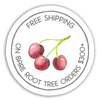
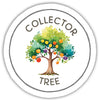
Check Your Zone Compatibility:
Compatible with your zone.
Growing Zone for

Our Guarantee To You
Since 1976, we've served our customers at every stage of growing. Please contact us at any time. We are happy to support and assist you.
Shipping Information
Shipping Information
Cannot ship to the following states: HI, AK, PR, GU, VI
Shipping Weight: 5.0 lb
Dimensions: 47.5"L x 7.3"W x 2.75"H
Features
Features
- Bare Root
- Self-fruitful
- Suited to Warmer Climates
Characteristics
Characteristics
Planting & Care
Planting & Care
Useful Information
Useful Information
Guarantee
Guarantee
Limited Dormant Tree & Plant Guarantee
* Claim deadline is June 15th
We guarantee that your dormant tree or plant will arrive in good, viable condition. If your tree arrives in substandard condition, notify us within 3 days of delivery. Please email pictures of the box, inside packaging, the tree and its roots to helpdesk@groworganic.com. We will investigate your claim and process a request to exchange or refund the damaged product.
If your dormant tree or plant has not grown new leaves by June 15th, you may be eligible for our Limited Dormant Tree & Plant Guarantee. This guarantee provides for a store credit for the purchase price of the tree, excluding shipping. Please see the Instructions below.
Important Dates:
- April 1st Dormant trees/plants must be planted in the ground
- May 15th Perform scratch test, if no new leaves have grown
- June 15th Deadline to apply for a dormant tree/plant credit
All required documentation must be received by June 15th for your claim to be considered. Claims or documentation received after June 15th will be denied, without exception. Instructions listed below
Terms and Conditions
We cannot guarantee that your tree or plant will remain alive and healthy after it is received, or bear fruit as there are too many variables in your environment that are beyond our control (i.e. soil preparation, weed and pest control, proper irrigation, chill hours, compatible hardiness for your growing zone, proper choice of pollinator, extreme weather, rodent damage, disease, etc.).
We cannot guarantee that we will be able to provide a replacement tree/plant of the same species either that same growing season or in future years. Customers are responsible for all shipping fees associated with replacement trees and plants.
If we determine that the tree you purchased directly from us is not viable, we will issue you a store credit (not a refund) for the purchase price of the affected dormant tree or plant. Shipping is not included in the dormant tree/plant guarantee. Store credits can be used to purchase any product we sell and are valid for use only until July 1st of the following year.
Historically, 98% of our dormant trees and plants grow and thrive when they have been cared for and planted using our growing guides. Dormant trees and plants must be planted in the ground by April 1st in order to be eligible for credit. If the ground in your area is still frozen solid, you may temporarily plant your tree or plant in a pot.
Potted, non-dormant trees or plants are excluded from this guarantee as they are not dormant at the time of shipment. Evergreen trees such as citrus, avocado and olive trees are not available for credit under the Dormant Tree and Plant Guarantee.
Instructions
We guarantee that your dormant fruit tree or plant will leaf out, if you care for it according to our growing guides. In the unlikely event that your dormant tree or plant does not have leaves by May 15th, follow these simple steps to apply for a store credit:
Before you call or email, please perform a “scratch test” to determine if the tree or plant is still alive. This video shows how to check for live tissue under the bark. Scratch tests need to be done a few inches above and below the graft.
Green Cambium Layer / Living Trees
If the cambium layer under the bark is green, give your tree a little more time. It is still alive, but hasn’t come out of dormancy yet. Check to make sure that it is getting the right amount of deep root water, enough sunlight and that the weather is warm enough for that type of tree/plant to come out of dormancy. Every tree has its own personality and will come out of dormancy at different times. Be sure to submit the required documentation listed below by June 15th, if it doesn’t grow leaves.
Brown Cambium Layer / Dead Trees
If the scratch test shows a brown cambium layer or if your dormant tree/plant doesn’t have leaves by June 1st, please email us at helpdesk@groworganic.com. All required documentation listed below must be received by June 15th for your claim to be considered. To be considered for the guarantee claim, all required documentation must be received by June 15th. Incomplete submissions will be denied.
Required Documentation
- Order number
- Name of dormant tree/plant and the quantity affected
- Photos of each tree or plant showing:
- The roots (tree or plant must be pulled out of the ground)
- The scratch test areas
- The entire tree/plant
We reserve the right to not issue credit for items that have already been replaced. We also reserve the right to require photographic evidence that the tree/plant was not killed by root rot, rodent or mechanical damage.
Share
